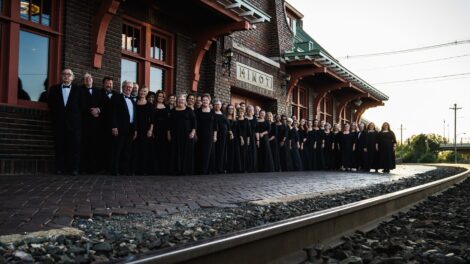More acquisitions ahead for Maple Diversion project
Council makes tough decision on design
Eleven property owners will be impacted by a Maple Diversion alignment selected by the Minot City Council Monday.
The council has been contemplating alternatives but, in the end, returned to the original plan presented by the Souris River Joint Board for Phase MI-4. The segment extends from around Maple Street in southwest Minot to Broadway. It would complete flood protection on Minot’s west side and is part of the milestone to provide flood protection to 60% of the valley.
After years of coordination with the railroads in that area, a configuration was developed that now allows detailed design work to begin. The council was hoping for a design that would limit acquisitions, but costs and other factors made that difficult.
The adopted design includes an estimated $3.6 million in additional acquisition costs for the 11 properties, which has 15 dwelling units. This is in addition to properties along the Souris River already taken for MI-4. The selected option includes the construction of a levee and reconstruction of Second Avenue Southwest on the dry side of the levee.
The council considered options that required fewer acquisitions. The least socially disruptive alternative that maintained project objectives would affect six fewer properties and 10 fewer dwelling units but would increase the cost by an estimated $5.9 million. The added costs of the other alternatives would not be eligible for federal cost-share dollars.
One option was $1.4 million less expensive, but the joint board didn’t recommend it because it would disrupt transportation connectivity with the elimination of Second Avenue Southwest, while still requiring nine property acquisitions.
“Anytime we’re talking about taking land for public use, it’s a very, very big deal,” council member Mike Blessum said. “I’ll tell you, between reading the comments that we were given and reaching out and talking directly to the people affected by this, that I feel comfortable, as hard as it is and as rotten of a process as it is, that this is the right path, with one very big caveat. The big caveat to that is that these property owners are made whole.”
He said the affected residents rebuilt in good faith after the 2011 flood, taking on new mortgages. One property owner has low-income rental housing that now the flood project will be demolishing.
“The big thing that came through loud and clear was that we do right by them through our negotiations with them, that we work with them to come to an agreement that makes sense and leaves them whole, not just financially,” Blessum said. “The picture in my mind is that they may walk away sad, but I hope that they don’t walk away mad.”
“Most of the people that rebuilt after the flood almost bought their house twice. And we need to think of that and remember that,” council member Scott Samuelson added. “We need to do the best for the people down there.”
However, Blessum said, his conversations with the residents found them supportive of the flood project.
“They get it. They understand. They want to be part of the long-term solution for our community,” he said.





